Driving Diversity And Inclusion In Life Sciences

By Erin Harris, Editor-In-Chief, Cell & Gene
Follow Me On Twitter @ErinHarris_1
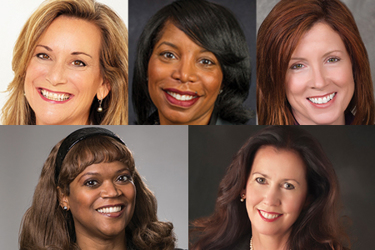
Originally published in Life Science Leader magazine.
McKinsey & Company’s recent report, “Diversity wins: How inclusion matters,” states that there is a “strong business case for both gender diversity and ethnic and cultural diversity in corporate leadership, and that the most diverse companies are now more likely than ever to outperform less diverse peers on profitability.” The life sciences industry continues to progress by building and supporting a diverse workforce, but there’s work to be done.
I caught up with Beth DiPaolo,equality team leader, president, and global head, Eurofins Professional Scientific Services, Eurofins; Yolanda Hutchins, SPHR, SWP, HCS, SHRM-SCP, senior director, talent acquisition, PhRMA; Eileen Martin, global director of inclusion, EMD Serono; Edie Stringfellow, director, diversity & inclusion, MassBio; and Robin Toft, founder and president, Toft Group Executive Search for actionable ways to develop, implement, and require a diverse and inclusive working environment that drives innovation and profitability.
WHAT ARE THE DIVERSITY AND INCLUSION ISSUES FACING THE LIFE SCIENCES INDUSTRY?
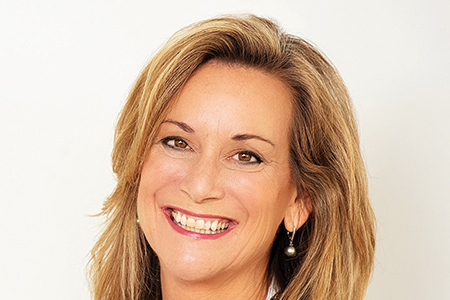 ROBIN TOFT, Toft Group Executive Search
ROBIN TOFT, Toft Group Executive Search
We need to educate CEOs that a diverse workforce makes business sense for four reasons:
- Drives profitability
- Enhances and fosters innovation
- Amplifies the voice of the female consumer
- Increases the ability to attract and retain talent
Authentically including women — and diversity of all kinds — is not only a breath of fresh air for our industry but also a savvy business decision. The fastest way to diversity is to hire women. Whether you are interviewing internally or externally, you must insist on a diverse slate of applicants coming to the table. Still today, even with focus on diversity and inclusion, women represent only 22 percent of C-level and board of directors and 5 percent of CEOs.
HOW IS THE LIFE SCIENCES INDUSTRY CREATING A CULTURE FOCUSED ON DIVERSITY AND INCLUSION TO COMBAT THE ISSUES FACING MINORITY GROUPS?
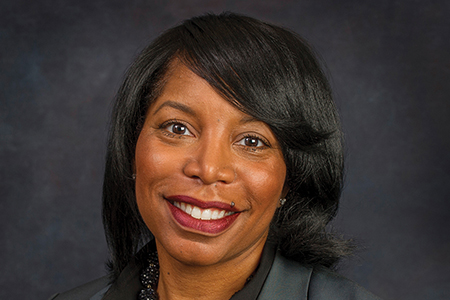 YOLANDA HUTCHINS, PhRMA
YOLANDA HUTCHINS, PhRMA
At PhRMA, we have a diverse management committee in which half of the individuals at that high leadership level are women. And last year, Lori Reilly became our first-ever chief operating officer. Earlier this year, PhRMA President and CEO Stephen Ubl signed the CEO Action for Diversity & Inclusion Pledge, which included a commitment to have complex conversations about diversity and inclusion, expand unconscious bias education, share best practices, and develop strategic inclusion and diversity plans. And PhRMA was a proud supporter of the Equality Act, a bill to finally create a set of federal protections for LGBTQ people under our nation’s civil rights laws.
Our companies are also actively working on this issue, designing clinical trials with diversity in mind, creating employee resource groups, and directing internal research on diversity. They’re also developing a rich pipeline of diverse talent by partnering with external organizations and universities to develop leadership programs targeting women and people of color and growing the next generation of STEM talent by engaging middle and high school students in hands-on biotechnology experiments and interacting with life sciences professionals.
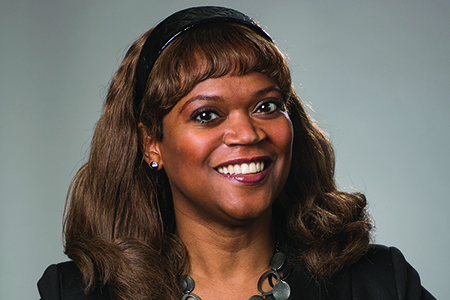 EDIE STRINGFELLOW, MassBio
EDIE STRINGFELLOW, MassBio
One way the life sciences industry is creating a culture of equality to combat these issues is through increasing cultural competencies within companies across all positions. Leaders will see the benefit of taking time and encouraging their teams to learn about each other’s cultures, beliefs, and experiences represented at the company. It promotes inclusivity and trust and will create a rippling effect throughout the industry, including making leaders comfortable with hiring non-white males to leadership and executive positions. This will ultimately drive innovation and improve patient outcomes by incorporating various perspectives, ideas, and strategies into the decision-making process.
WHAT WORK STILL NEEDS TO BE DONE TO PROMOTE AND DRIVE A CULTURE OF DIVERSITY AND INCLUSION?
EDIE STRINGFELLOW, MassBio
We need more sponsoring than we do mentoring. Companies need to make it a priority to develop intentional, comprehensive sponsorship programs that pair an executive leader and a diverse employee. Mentors are great sounding boards for short-term, tactical questions and are awesome coaches to help strengthen functional skills as both parties develop their careers. Mentoring should not be discarded; however, it has not helped those in underrepresented groups excel at the same rate as white males. Sponsors are invested in the long-term career success of their mentees. They advocate and find opportunities for promotion and career development. They put their name on the line, open their network, identify opportunities, and accelerate the learning curve for team members.
Also, show me how someone gets paid, and I will show you how they will behave. We need to link equality, diversity, and inclusion (ED+I) strategies to employee performance reviews as well as to executive bonuses. These efforts need to be measured with the same scrutiny as other business objectives, including a mix of quantitative and qualitative measures. When you tie ED+I efforts to compensation, team members and management take it more seriously.
In addition, companies should establish a clear process by which all employees can self-nominate for promotion, and decisions for/against promotion should be openly and constructively communicated. This will provide clear guidance and full transparency, along with how to progress and extend an employee’s career throughout this structure.
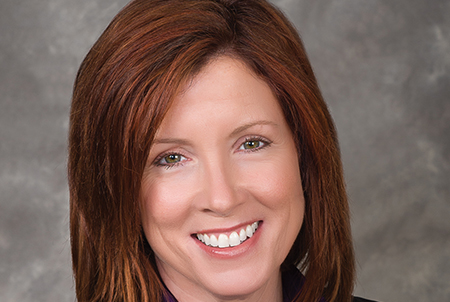 EILEEN MARTIN, EMD Serono
EILEEN MARTIN, EMD Serono
To attract and retain more women, especially women of color, into high-level positions in the sciences, we need to start building our bench strength much earlier in the talent pipeline. We must ignite a spark of curiosity, as early as middle and high school, in young women to take on math and science. At Merck KGaA, Darmstadt, Germany (whose U.S. affiliates are EMD Serono, MilliporeSigma, and EMD Performance Materials), our healthcare division is implementing a push-pull strategy, whereby we are unearthing any systemic biases in our talent evaluation system, while also giving women the skills they need to get to the next level. We are continuously monitoring the percentages of our women by role level, striving to have our succession plans gender balanced, and we work to also ensure our internal development courses are gender balanced. We are promoting training on unconscious bias and how to mitigate bias in the workplace, including gender microinequities.
We have 50 of our high-potential women matched to top executives in a 1:1 sponsorship program, and we just received approval to add 50 more. We are working with our Leaders of Color founder, Dr. Marie-Ange Noue, to ensure women of color are fairly represented in these programs, and she will be securing additional executive sponsors for employees of color. Finally, we have a return-to-work program that facilitates getting women back to work after a career break due to childcare, eldercare, serving in the military, etc.
We bring women back into the workforce, support them with a mentor and onboarding, and work with them to ramp up any skills or technology they may need in their new roles.
WHAT ARE YOUR SUGGESTIONS FOR DIVERSITY AND INCLUSION INITIATIVES IN LIFE SCIENCES COMPANIES?
ROBIN TOFT, Toft Group Executive Search
Educate the CEO and executive team on why diversity makes us a competitive employer. We suggest the CEO adopt a top-down commitment to diversity, including a core value from the top down that when given the choice of two equally qualified candidates, we choose diversity.
Regarding the company website, create a diversity page and clear mission statement. Ensure your executive team and board are diverse. Highlight successes of your female executives. Review your talent/recruiting practices; teams that interview should be diverse and ensure there are diverse candidates before hiring begins. Train employees; recognize that unconscious bias exists and implement unconscious bias training for all company executives and hiring decision makers. In board roles, almost 70 percent of respondents acknowledged that their boards used personal networking or word of mouth to identify the candidate pool from which their newest director was chosen. No wonder there is such limited diversity in the board room!
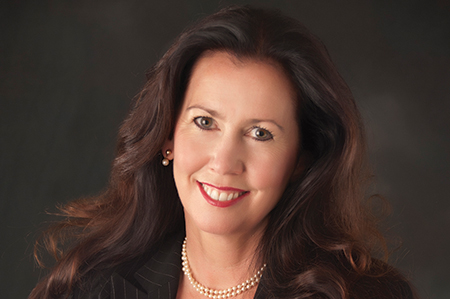 BETH DIPAOLO, Eurofins
BETH DIPAOLO, Eurofins
Change the culture on both sides of the coin. In the workplace, women are often able to negotiate for others but are less able to negotiate for themselves. Offer a course or development program that teaches women how to negotiate on their own behalf and teaches decision makers receiving the negotiation terms about the existing challenges, stereotypes, and biases females face. What does that look like, and how can you, the decision maker, proactively identify, change, and improve this issue? Develop not only the person who wants to rise up but also raise and heighten awareness in those who have the power to allow them to rise up.
Edie Stringfellow, director, diversity & inclusion, MassBio
AS A LEADER IN THE LIFE SCIENCES INDUSTRY, WHAT IS YOUR ACTIONABLE ADVICE TO MINORITY GROUPS AS THEY ADVANCE THEIR EDUCATION/CAREER IN THE LIFE SCIENCES?
BETH DIPAOLO, Eurofins
You never graduate. When you begin your career, your job is not to just get a job. Consider your brand: Who are you? What is your mission, and what is your vision? Begin with your goal and work backwards. Think about your goals and what is going to drive you to achieve those goals. Craft a mission statement so you have a compass to guide you to that goal. Choose an advocate, someone who not only helps you advance professionally but also helps you advance your thinking, skills, and development.
YOLANDA HUTCHINS, PhRMA
My advice to minority groups is to create a professional strategy. Once you identify what you want to do next, find the job descriptions for those roles and pay special attention to the basic and preferred requirements. Look for opportunities in your current position where you can develop these skills, and work closely with your manager and/or mentor to obtain guidance and support. Also, actively build and maintain your life sciences professional network. Relationships are extremely important, and many individuals obtain jobs and advance in their roles through their networks. Seek out individuals currently holding a position you would like to have in the future and ask if they would be willing to mentor you. Join professional groups that focus on connection and development, like Women of Color in Pharma (WOCIP).
EDIE STRINGFELLOW, MassBio
We must keep in mind that when one group is demonstrating progress, we all should still put in the equal amount of energy so that nobody is left behind. One group cannot benefit at the expense of another. We must support each other. Be an up-stander and not a bystander when you see or hear something that is offensive to someone who does not identify with your background or experience. We need solidarity in protecting each other and getting to know one another. Show up and promote each other’s events. Share your networks. Actively engage in keeping each other psychologically safe at work. Call out ableist behavior. Make each other aware of professional development programs that are available in your network. Support each other’s causes, holidays, etc. When you have that mix of racial and ethnic groups, it will no longer be “we” vs. “them.” Everyone will thrive when our organizations ensure that we reflect the patient population in our medical schools, at the decision-making level within our companies, and when investing in research.
AS A RESULT OF THE COVID-19 PANDEMIC, COMPANIES FACE THE CHALLENGE OF REDUCED CHILDCARE AND SCHOOLING OPTIONS, AFFECTING FAMILY CARETAKERS AND NECESSITATING IMPROVED WORK-LIFE BALANCE PROVISIONS. HOW CAN COMPANIES’ EXISTING DIVERSITY, EQUALITY, AND INCLUSION PROGRAMS PIVOT/EVOLVE TO SUPPORT THIS THROUGH COVID-19 AND BEYOND?
YOLANDA HUTCHINS, PhRMA
Several companies are leveraging their employee resource groups (ERG) to help provide support to families during this time. They’re also identifying creative ways to assist employees in balancing work and home life, such as hosting virtual health and wellness sessions, leveraging their disability ERGs to discuss and offer tips that support mental health, planning virtual events specifically for kids/families, and allowing flexibility with the work schedule and PTO.
EILEEN MARTIN, EMD Serono
Though we have long known that women shoulder a disproportionate share of household responsibilities, from childcare to housekeeping, COVID-19 has exacerbated the great need for programs that support women and all caregivers in the multifaceted aspects of their life. For diversity and inclusion leaders, this means being a voice for change when we see gaps that can be filled and support that can be given. We need company leaders to adopt and encourage flexible working, ensure paid leave for women and men in all sectors, and lead with emotional intelligence. At EMD Serono, we’ve implemented two purpose-driven initiatives — (1) Healthy Women, Healthy Economies and (2) Embracing Careers — rooted in a deep understanding of these needs, which work to provide support for not only our employees but also women and caregivers worldwide. At the company level, this starts with flexible hours, work-from-home options, paid time off, and other alternative arrangements to give caregivers options to thrive at work and at home. The last thing we can afford as an industry is to lose our female talent because they cannot sustain this inordinate burden.
